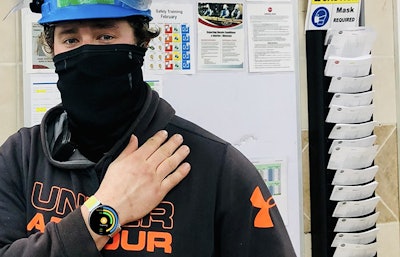
Monitoring the performance and training of poultry processing workers with wearable technology could help reduce injuries on the job, while improving company culture and labor retention.
“Right now, the labor force is the most valuable asset for any company,” Apoorva Kiran, PhD, CEO, Mentore, said. “By empowering this base layer with technology, it will be much easier for management to manage the entire workflow.”
Poultry processing facilities have faced increased workforce challenges over the past few years due to the COVID-19 global pandemic. As a result, interest in technology solutions that can help reduce labor issues and improve worker safety, like wearables, has accelerated.
A connected training platform
Wearable technology, in the form of smartwatches, can provide benefits to workers, management and corporate leadership.
For example, workers in poultry plants want to be happy, safe and confident that they are performing their jobs correctly. Meanwhile, managers and corporate leadership want many of these same things in addition to a good company culture and management practice.
Wearables can help everyone achieve their goals, Kiran said.
“The smartwatches tell workers what they’re doing, how they’re doing and collect feedback,” he explained. “It helps solve the labor retention issue by training and retaining the most qualified workers using artificial intelligence (AI) and data science.”
In addition the wearables can function as a connected training platform between frontline workers and managers. With a battery life designed to last 16 hours, the smartwatch collects and shares performance data with employees and managers through sensor technology and deep learning.
Real time data
The watch interface has four aspects; coaching, testing, help and connectivity. Workers can use these options to learn a new skill, report feedback, monitor performance data and ask for guidance in real time. The performance data can also help management determine if poor ergonomics or equipment is to blame or if additional training is necessary.
“It’s designed in a way to provide true insight into what’s happening on the floor and how you can manage your work better,” said Kiran.
“It’s a win-win situation for everyone. Workers will love their job and stay in a job with greater satisfaction. Employers will no longer have to worry about a high turnover rate and the stress associated with an unskilled workforce.”


















